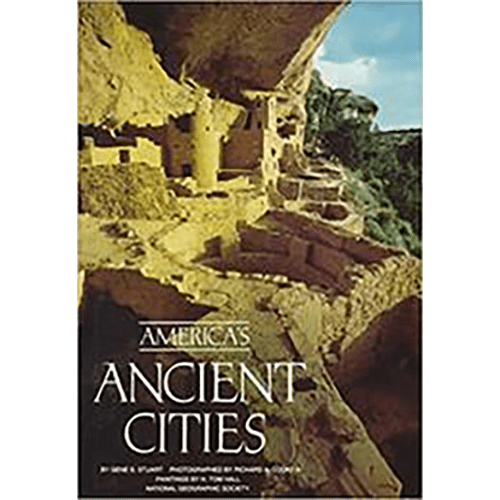Description
Our copy has some tearing on the dust jacket. The hardcover binding is nicely gold embossed. A lovely addition to your collection.--
"America, say, historians, was peopled by savages; but savages never reared these structures, savages never carved these stones." So concluded explorer John Lloyd Stephens in 1839 as he gazed upon the silent ruins of Copan in Honduras. He promptly bought the Maya city for 50 dollars and recorded his observations. Stephens was not the first to delve into mysteries of ancient urban America - and today his successors investigate sites throughout the continent.
Spanning more than 14,000 years of human history, America's Ancient Cities reveals how settlements evolved and how urban centers grew and functioned. Millennia ago, prehistoric hunters and gatherers dispersed and peopled the continent. Later, Eastern Woodland cultures constructed mounds and earthworks, and fishing and whaling villages developed along the Northwest Coast. With the rise of agriculture, bison-hunting farmers settled along rivers in present-day Nebraska and the Dakotas. In the Southwest, the Anasazi built the multiroomed pueblos of Chaco Canyon and Mesa Verde.
Urban centers in Mesoamerica surpassed all others in size and magnificence. Lofty Monte Alban dominated Mexico's Oaxaca Valley. Maya kings ruled city-states - Coba, Uxmal, and Mayapan among them. The Aztecs were so awed by the pyramids of Teotihuacan they believed gods had built them, while their own capital of Tenochtitlan became the New World's greatest city.
Many sites lie unexplored, and intriguing questions remain unanswered. Experts still study Copan, and one archaeologist calls its piles of carved stones "the largest jigsaw puzzle in Mesoamerica." Another notes that the real charm of archaeology is "not what old mysteries it solves, but what new ones it poses."
Mysteries are explored and recent discoveries described in Gene Stuart's thoughtful text; Rik Cooke's haunting photographs capture the grandeur of ancient cities and the artistry of vanished cultures; specially commissioned paintings by H. Tom Hall brings to life ceremonies and customs of the past.
